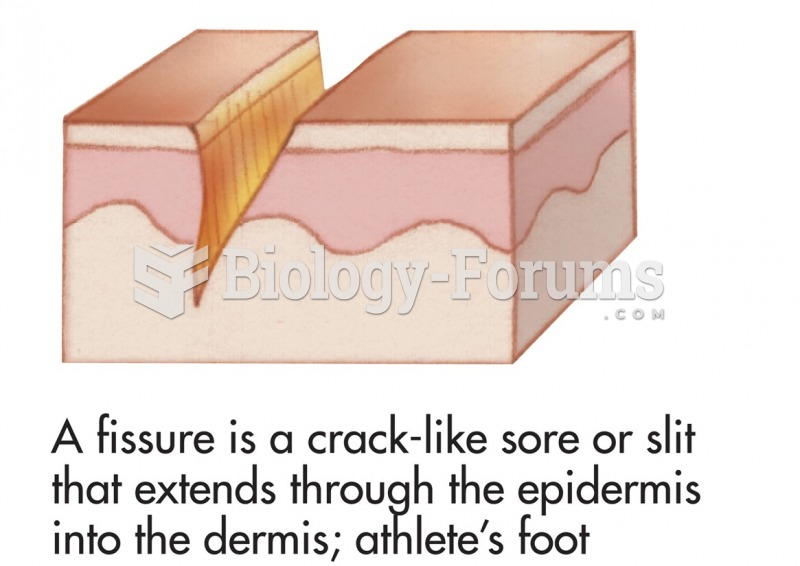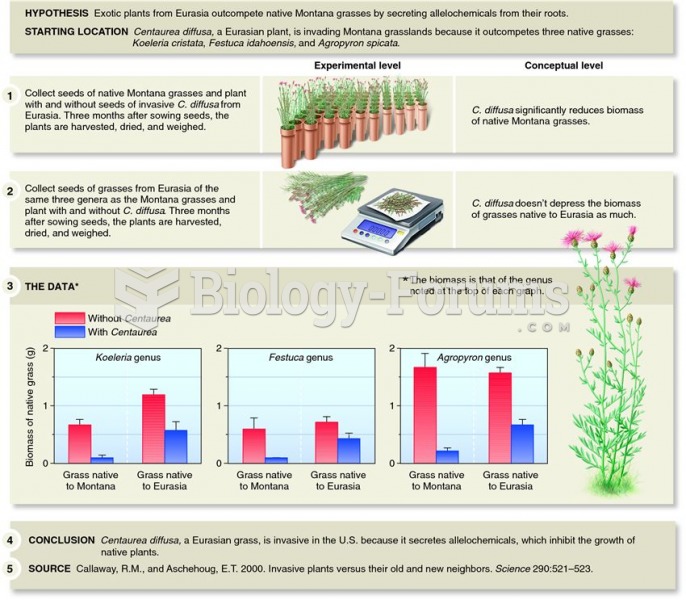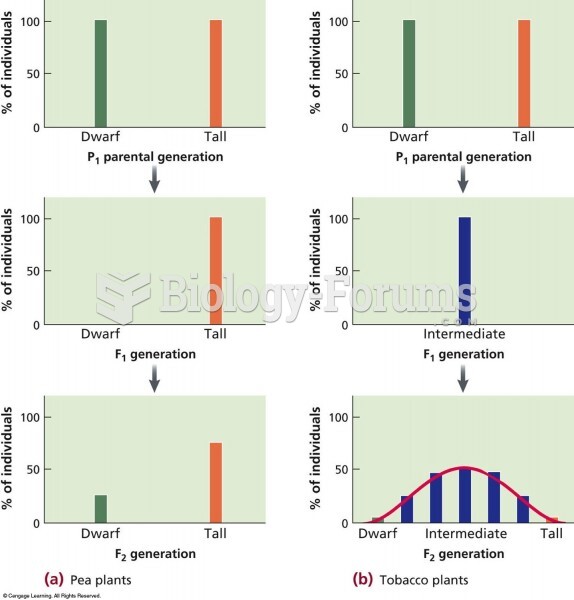This topic contains a solution. Click here to go to the answer
|
|
|
Did you know?
You should not take more than 1,000 mg of vitamin E per day. Doses above this amount increase the risk of bleeding problems that can lead to a stroke.
Did you know?
Throughout history, plants containing cardiac steroids have been used as heart drugs and as poisons (e.g., in arrows used in combat), emetics, and diuretics.
Did you know?
The first oncogene was discovered in 1970 and was termed SRC (pronounced "SARK").
Did you know?
The longest a person has survived after a heart transplant is 24 years.
Did you know?
In 2006, a generic antinausea drug named ondansetron was approved. It is used to stop nausea and vomiting associated with surgery, chemotherapy, and radiation therapy.
 Common skin signs are often evidence of an illness or disorder. A fissure is a crack-like sore or ...
Common skin signs are often evidence of an illness or disorder. A fissure is a crack-like sore or ...
 Diaphragm. Place the thumb on a spot along the diaphragm guideline, then flex the toe above that ...
Diaphragm. Place the thumb on a spot along the diaphragm guideline, then flex the toe above that ...





